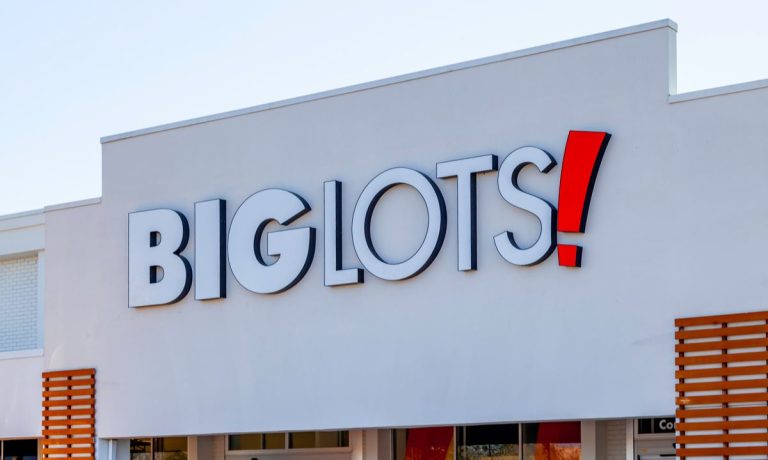Big Lots Banks on Holiday Shopping to Bounce Back From Weak Q2

Big Lots is hoping holiday décor will put consumers in a shopping mood.
The discount retailer, while announcing its second-quarter earnings Tuesday (Aug. 29), acknowledged that persistent inflation has negatively impacted its financial performance, leading consumers to cut back on discretionary spending.
Earlier this month, PYMNTS indicated that after two consecutive months of increasing confidence, U.S. consumers are exhibiting a slightly reduced level of optimism about the economy. The initial data and index for evaluating consumer sentiment, which was published on Friday (Aug. 11) by the University of Michigan, dropped to 71.2 in August, down from July’s 71.6.
“In general, consumers perceived few material differences in the economic environment from last month, but they saw substantial improvements relative to just three months ago,” said University of Michigan Director of Surveys Joanne Hsu.
Read more: Consumer Sentiment Dips From July’s Levels and Retailers May Face Pressure at the Register
Big Lots is experiencing this sentiment as it contemplates its most recent quarterly earnings. In fact, Bruce Thorn, president and CEO of Big Lots, pointed out on a call with analysts on Tuesday that this is a sentiment the retailer has been enduring for more than a year.
“For the past year and a half, we’ve been playing defense as the consumer environment quickly and sharply deteriorated,” Thorn said. “High inflation has disproportionately impacted our lower income customers who have delayed or pulled back spending on discretionary items, particularly in high-ticket home and seasonal categories, which were already challenged by the post-COVID spend shift away from those categories.
“Further, we were unfavorably impacted by a furniture product shortage issue caused by the sudden closure of our key supplier late last year,” Thorn added.
Thorn highlighted that the shutdown of United Furniture Industries resulted in an approximate nine-month halt in the provision of Broyhill products to Big Lots. Nevertheless, this problem has now been addressed, and the company is unveiling a modernized assortment of furniture and home furnishings. He indicated that around 75% of Broyhill’s upholstery has been revitalized for the upcoming third quarter, encompassing a diverse selection of accent furniture items.
“We feel very good about recovering our Broyhill interruption in the back half of the year with great quality, great brand, great trend-right modern furniture across our fleet,” Thorn said.
The CEO highlighted Big Lot’s strategy for the holiday season, noting his optimism for a successful season.
“We’re now focusing on lower price seasonal items. We expect better sell-through in the back half of the year with Halloween and the holiday season,” Thorn said.
The move comes as retailers work to snag potential consumer spend by pushing seasonal products early.
Back-to-school displays are still up, but Christmas is beginning to creep into the aisles, PYMNTS reported last week.
Christmas is now sneaking past Halloween and even encroaching on consumer spending during back-to-school and Labor Day sales. Big box stores like Lowe’s, Home Depot and other retailers have been at the forefront of early holiday promotions. Predictably, Amazon is appearing as a key contender in the sights of all retailers.
However, there are at least a few indicators suggesting that the influx of holiday products could come into conflict with the staples and summer items that have already filled both physical and online store shelves, leading to potential inventory buildup.
The situation arises as consumers weigh a pullback on spending due to the anticipated resumption of student loan repayments that could cut discretionary income by several percentage points.
Read more: Holiday ‘Sales Creep’ May Burden Inventory-Laden Retailers
Big Lots by the Numbers
In the second fiscal quarter ending on July 29, Big Lots reported a net loss of $249.8 million, equal to $8.56 per share. This includes a $155.4 million after-tax charge related to synthetic lease exit, distribution center closure, impairment adjustments, real estate gain, consulting fees and deferred tax asset valuation.
Excluding this charge, the adjusted net loss was $94.4 million, or $3.24 per share. In the same period of 2022, the adjusted net loss was $66 million.
Net sales for Q2 2023 totaled $1.139 billion, down 15.4% from $1.346 billion in the same period last year. The decline is attributed to a 14.6% decrease in comparable sales, partially offset by new store openings and relocations. Store count reduction contributed about 80 basis points to the sales drop compared to Q2 2022.